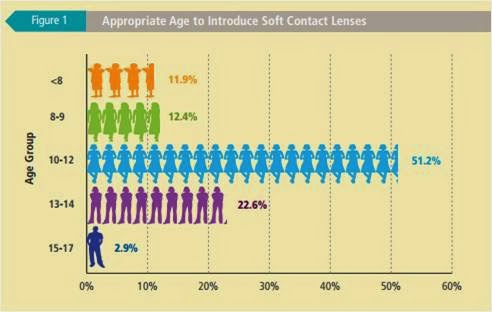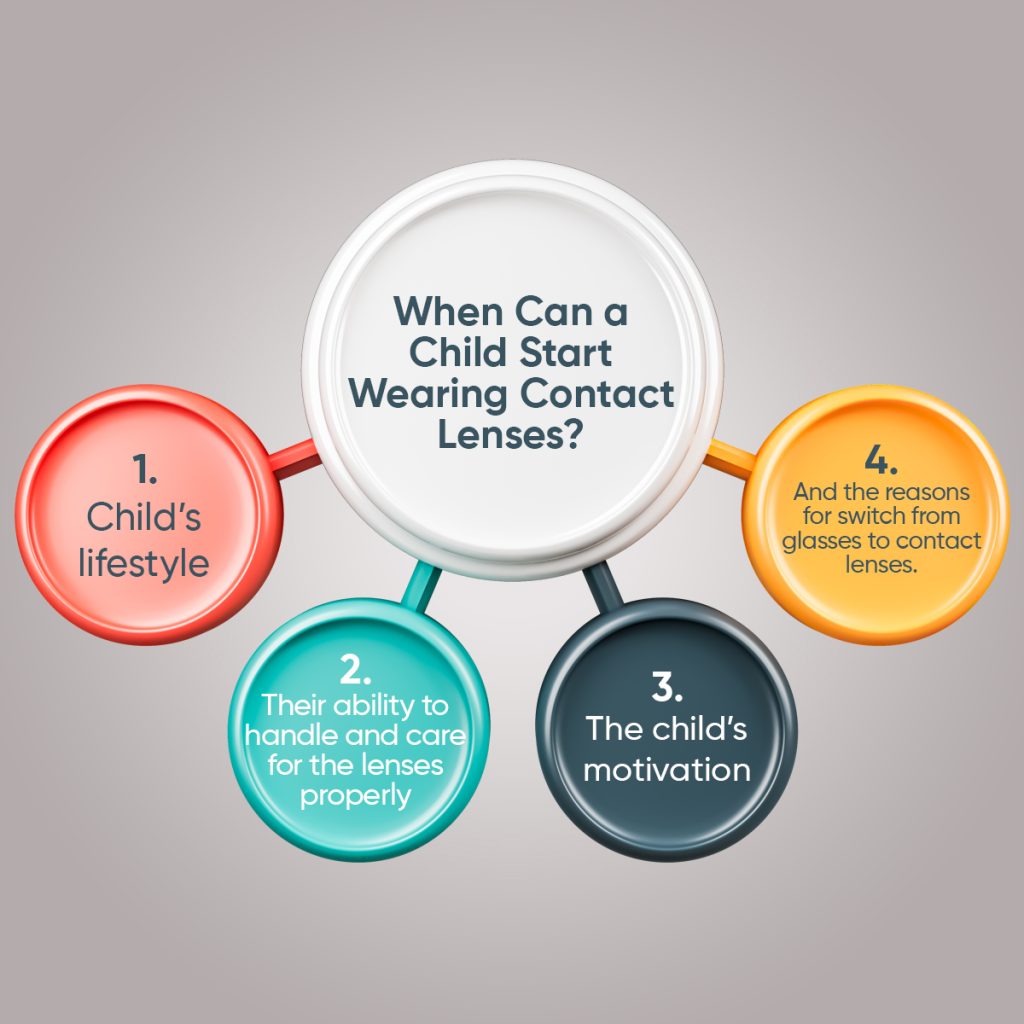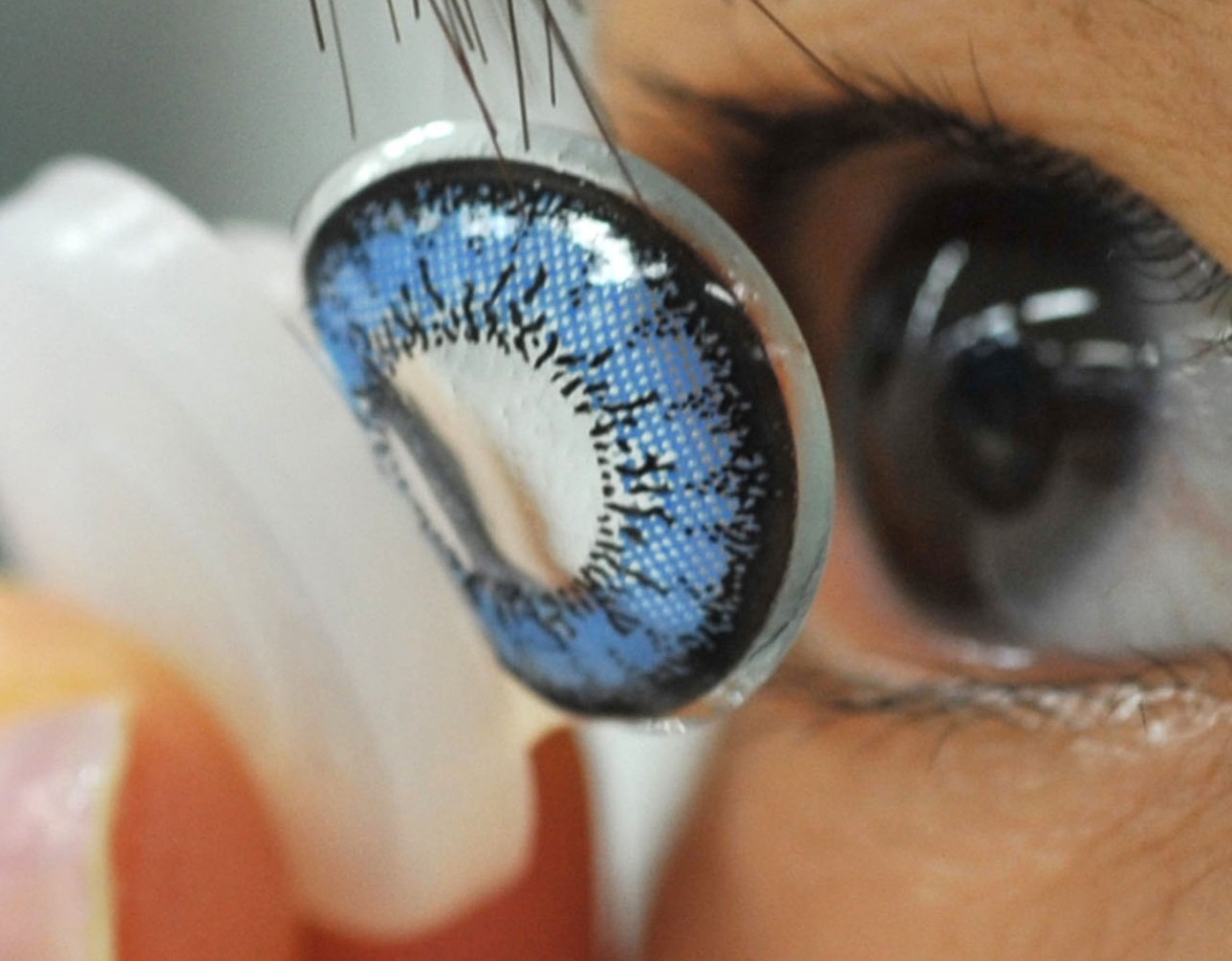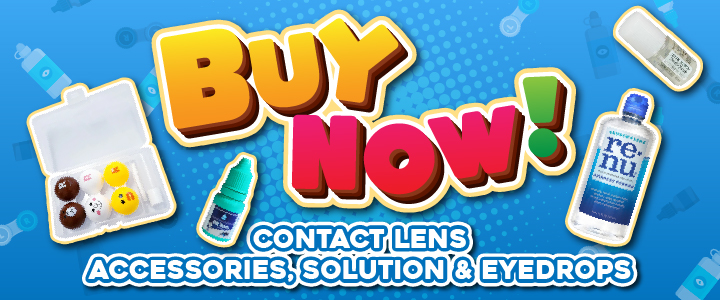How young is too young for contact lenses? This question has been around since the invention of soft contact lenses. In the realm of vision correction, glasses may be the first solution that comes to mind. However, for those who prefer an almost invisible solution or find glasses inconvenient, contact lenses provide a fantastic alternative. But, what age can you start wearing contacts? This question often sparks a considerable amount of discussion and curiosity, especially among parents whose children require vision correction.
This comprehensive guide will provide a deeper understanding of this topic. And help you navigate the world of contact lenses for kids.
Table of contents
Estimated reading time: 7 minutes
Understanding Contact Lenses
Contact lenses are small, thin lenses placed directly on the surface of the eyes to correct vision. They offer an attractive option to glasses, providing a less noticeable, often more comfortable, correction solution.
This option becomes particularly appealing to children and teens. They may feel self-conscious about wearing glasses or find them restrictive during physical activities.
Contact Lenses Age Recommendation: What Experts Say
It’s important to note that there isn’t a strict age limit for wearing contact lenses. The decision largely depends on a child’s level of maturity, responsibility, and specific vision needs.
Many eye care professionals suggest that it’s appropriate to consider contact lenses for children between the ages of 10 to 12. However, some younger children are capable of handling contacts responsibly. And in certain cases, infants may be fitted with contact lenses for specific eye conditions.
Consequently, the answer to “What age can you start wearing contacts?” can significantly vary depending on individual circumstances.
As per AOA, anyone can benefit from contact lenses, even children as young as eight years old.
More than half (51%) of optometrists feel it is appropriate to introduce children to soft contact lenses between the ages of 10 and 12 years old.
While nearly one in four (23%) feel 13-14 years old is a suitable age. One in ten doctors surveyed think it is proper to introduce 8-9 year olds (12%) or children younger than 8 (11%).
Figure below visually displays the age which optometrists say is the appropriate age to introduce a child to soft contact lenses.

When Can a Child Start Wearing Contact Lenses?
Deciding the right age for a child to start wearing contact lenses is not just about chronological age. Several factors contribute to this decision.

Key considerations include the
- Child’s lifestyle
- Their ability to handle and care for the lenses properly
- The child’s motivation
- And the reasons for wanting to switch from glasses to contact lenses.
A child who is heavily involved in sports or other physical activities, for instance, might benefit significantly from the freedom and full field of vision offered by contact lenses.
Although children at age eight can be fitted with contact lenses, doctors will first suggest spectacles and gradually switch to the other approaches in vision correction.
There are several other factors involved that influence doctors’ decisions when suggesting appropriate eye wear to children under 12 years.
A child’s dependency for the fulfillment of his basic needs on others i.e. feeding meals, taking care of belongings and his room etc. may affect a doctor’s decision.
If a child is responsible enough, smart at school, get good grades and welcoming towards accepting new responsibilities, then he makes the right candidate of contact lenses despite being as young as eight years old.
Children are naturally great contact lens wearers if they are responsible. They are less likely to suffer from dry eye. Often times when required even infants are fitted with contact lenses due to problems present at birth such as congenital cataracts.
Contact Lenses vs. Colored Contact Lenses for Kids
While standard contact lenses are designed to be virtually invisible, colored contact lenses can change or enhance the natural eye color. These lenses can be a fun option for children, especially for special events or costumes.
However, it’s essential to remember that colored lenses carry the same responsibilities as clear contacts. They must be used and cared for correctly to maintain eye health. Parents should always supervise their use, especially in children who are at the younger end of the spectrum for contact lens use.
The Pros and Cons of Children Wearing Contact Lenses
Just like any other vision correction option, contact lenses come with their pros and cons. One of the biggest advantages of contact lenses is that they don’t interfere with physical activities like glasses can.
They’re less likely to get damaged during sports or outdoor play, provide a full field of vision, and can’t be lost as easily as glasses. Furthermore, contacts can boost a child’s confidence, especially if they feel self-conscious wearing glasses.
However, contacts require careful handling and rigorous hygiene practices to prevent eye infections. It can be a challenge for some children to master these skills, particularly younger ones. There’s also a risk of discomfort or eye problems if the lenses aren’t used or cared for properly.
How to Determine if Your Child is Ready for Contact Lenses
Deciding at what age can you start wearing contacts isn’t just about physical readiness. Emotional and psychological readiness also plays a crucial role.
Your child might be ready for contact lenses if they demonstrate high personal responsibility. This includes maintaining good personal hygiene without reminders and taking care of a pet responsibly.
Additionally, children who express a strong desire to wear contacts and show understanding about the responsibilities that come with it, are often more successful in their transition to lenses.
What to Consider if your Child Demands Contact Lenses?
Children active in sports are less likely to feel comfortable with spectacles for many reasons. Glasses may cause injuries. They hinder peripheral vision and keep fidgeting which makes the child feel annoyed.
Contact lenses on the other hand feel comfortable, improve self-confidence & facilitates sports activities. Furthermore, when introduced at a younger age contacts can significantly slow down the progression of nearsightedness.
When making the great switch from glasses to contacts, make sure you talk to your eye care professional and discuss your concerns in detail.
- Start with daily disposable contact lenses as there are less risks involved. Although they are slightly more expensive, daily contact lenses need zero maintenance hence easier for younger children to adjust with.
- Doctors don’t suggest night or extended wear contact lenses to kids. As it carries the risk of corneal ulcers which may lead to permanent vision loss.
- Also, children with seasonal allergies don’t usually make the right candidates for contact lenses. Contact lenses may trigger the condition due to the possible risks of surface accumulation.
- Talk to your eye doctor about Silicone Hydrogel lenses. They are great at retaining moisture, resisting protein and lipid debris while allowing 7 times more oxygen than other materials.
Conclusion
Determining what age can you start wearing contacts involves careful consideration and personalized professional advice.
Remember, every child is unique, and what works well for one might not be suitable for another. As such, the decision should be made on an individual basis, considering each child’s maturity, lifestyle, and specific vision needs.
It’s always best to consult with an eye care professional to make the most informed decision for your child’s vision and eye health.
Contact lenses can be a fantastic option that opens up a new world of clarity and convenience for children when introduced at the appropriate age and handled responsibly.
Read More:



